MAINSPACE EXHIBITION /
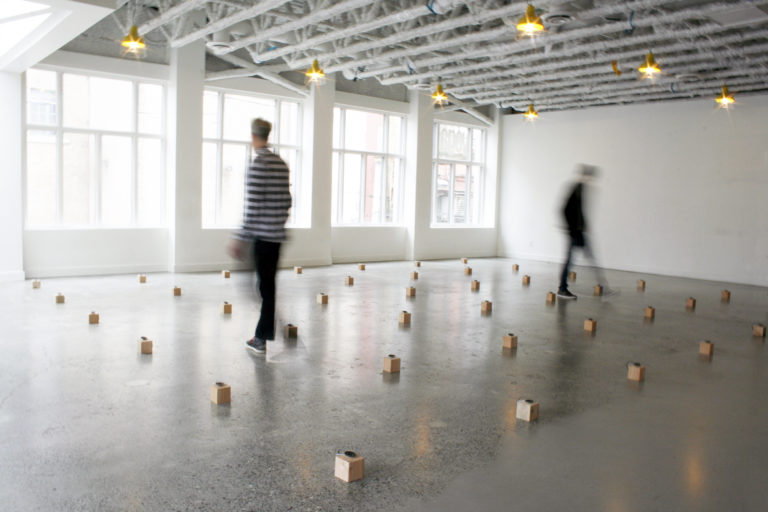
feedback loop of commensurability
Kevin Day
September 29—November 3, 2018
Exhibition Description
A floor-based interactive installation, feedback loop of commensurability consists of several speaker units positioned in a grid, communicating with a computer situated on the side. It collects information (movement, colour, and density, et al) from the viewers/users at regular intervals, translates this information into a coordinate (x, y), and plots it on the grid in the form of a notification tone emitted via one of the speaker units.
In such a way, the viewers/users experiencing the piece will be subjected to the compulsory and clandestine operations of surveillance and the machinic abstraction of distilling human subjects to quantifiable traits that will come to determine their identity, regardless of how decontextualized and inadequate they may be. Through the process of experiencing the piece, the users become abstracted, reduced to a single node on the grid, while their data continues to influence their behaviour as they navigate through the piece. The process emphasizes the ways in which one ‘becomes’ the data that has come to represent them, confounding the relationship and questioning the neutrality between the subject and their data-representation.
The sounds might induce a Pavlovian response where the viewers are summoned to voluntarily approach or compelled to avoid the source, foregrounding the agency information and communication technology (ICT) has in determining and priming human behaviours/responses and ways of thinking. The grid functions as both an emblem of ICT-facilitated capitalism and a particular epistemological framework.
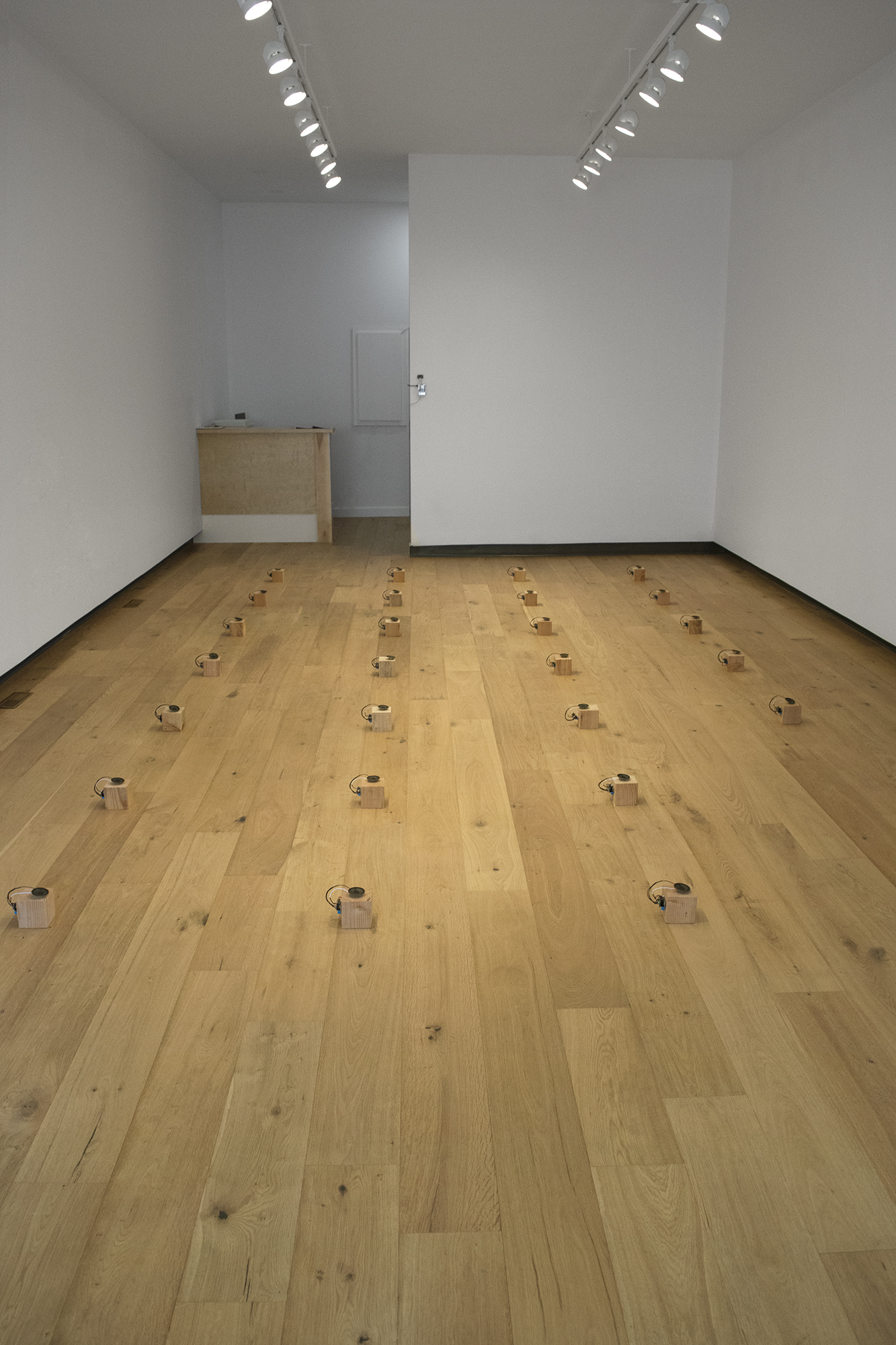
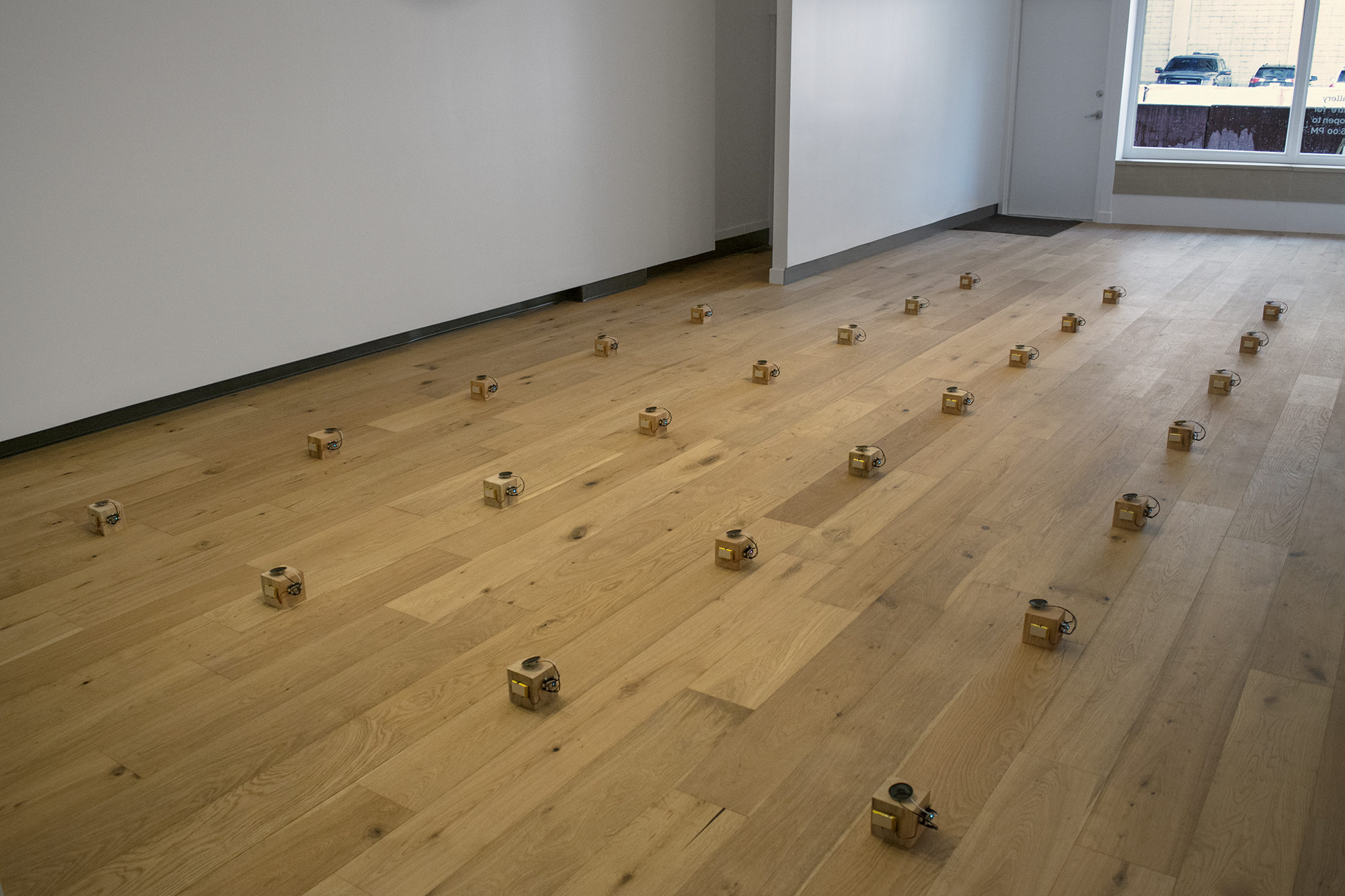
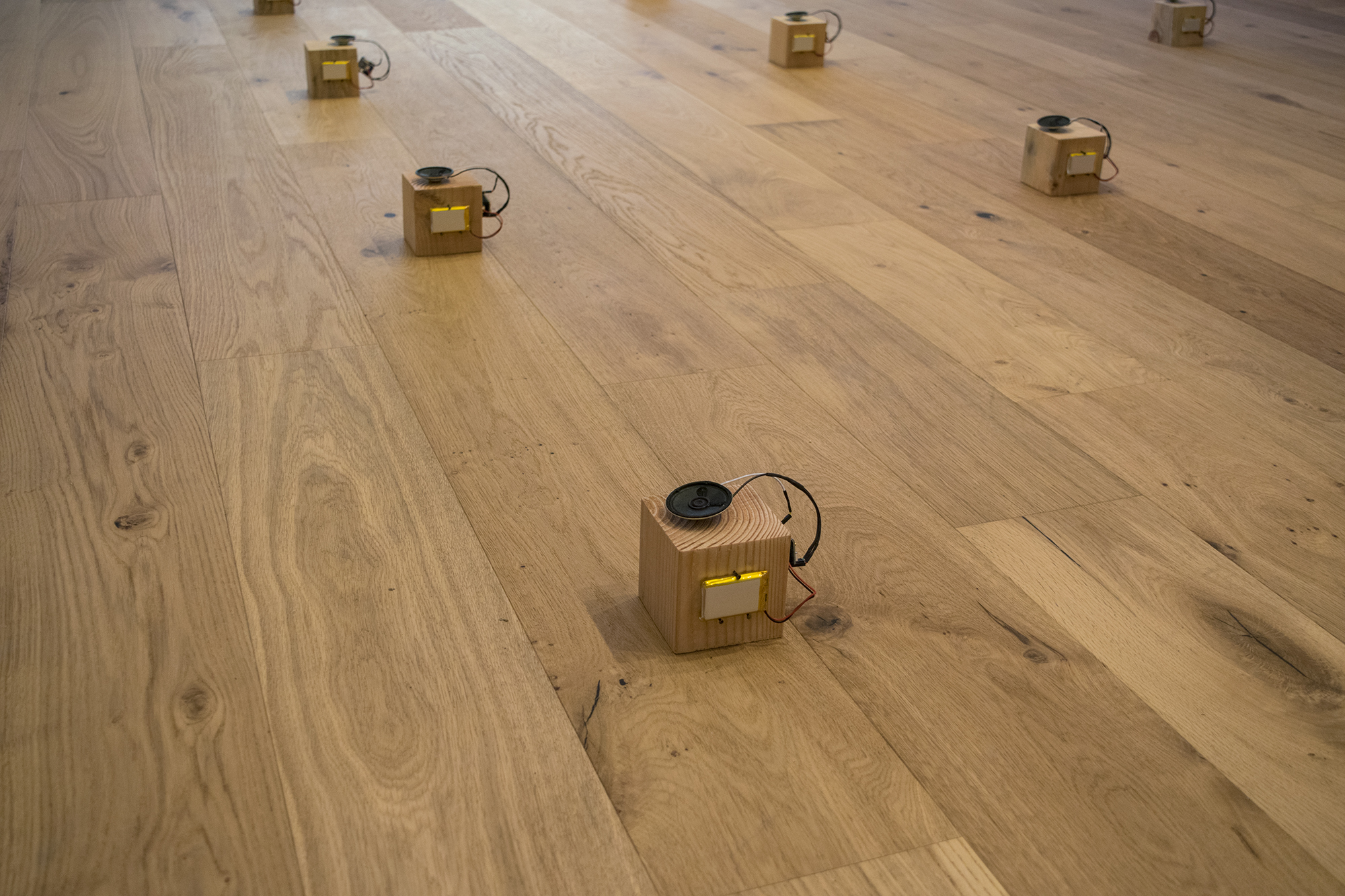
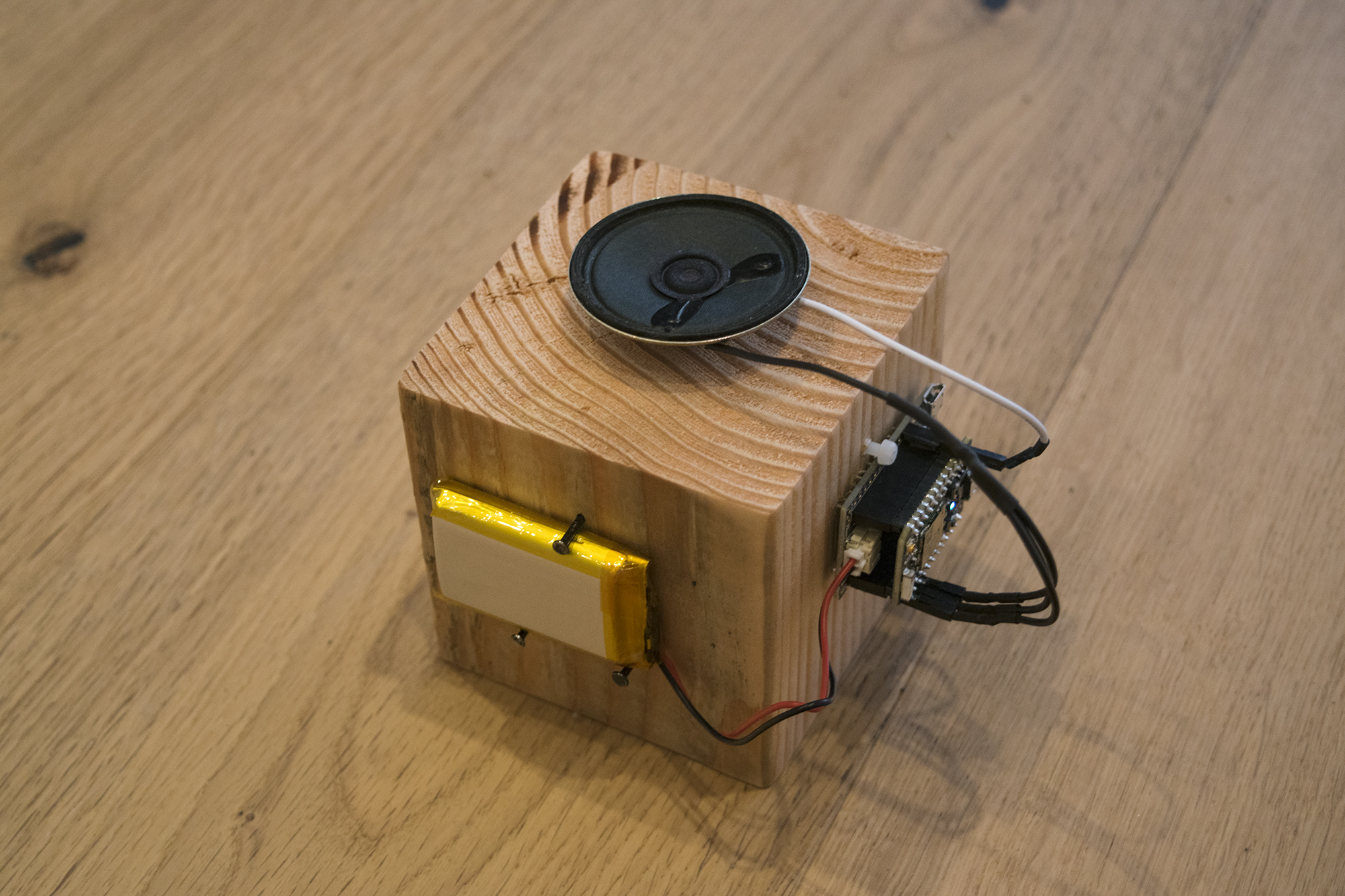

Exhibition Text
Ts’ui Pe must have said once: I am withdrawing to write a book. And another time: I am withdrawing to construct a labyrinth. Every one imagined two works; no one did it occur that the book and the maze were one and the same thing.
– Jorge Luis Borges, in The Garden of Forking Paths, 1942
At present, each passing minute in the world is marked with an average of 3,607,080 google search queries, 4,146,600 youtube video views, and 456,000 new tweets entering the Twitter-sphere. Ninety per cent of all data produced today has been created within the last two years alone.
– statistics referenced from: Data Never Sleeps 5.0, Domo¹
We like to think of our data as separate from ourselves. Data doesn’t define our identity. Each data-set is but a recurring fractal and fractional dimension of our complex selves, of our entirety. Data is surface, not depth. But what if it were both?
Kevin Day’s work titled feedback loop of commensurability, is a simulation of a simulation. An interactive work involving sound, sculpture, sensors, programming, and feedback, this work presents visitors with data for data’s sake. According to Day his installation, “emphasizes the ways in which one ‘becomes’ the data that has come to represent them, [thus] confounding the relationship [between the two]”. feedback loop of commensurability is an orderly cartesian x/y grid and sculptural installation. Tiny speaker boxes are plotted in an equidistant formation across the floor. Each box is also a networked-node containing a sensor that collects information from visitors as they move throughout the installation. The information is relayed to a centralized system which interprets the data, then disperses it back to the network as a series of triggers over randomized time intervals. Each triggered output is comprised of a singular repeating sound that resembles a smartphone notification tone.
Depending on one’s interest in the minimalist aesthetic of the installation and their proclivity, or aversion, towards the ubiquitousness of sonic push notifications, there are a variety of potential experiential observations of the work. These range from boredom and apathy to curiosity, anxiety, and confusion. Perhaps the most telling reaction is from many visitors who assign a degree of personal interactivity onto the work; they assume that they are able to alter the way in which the installation/program acts. Sorry, visitor, it’s not all about you. True, when one walks through the space, they trigger a series of micro events. However, the only predictable outcome of the programming response is that it is indeterminate. The trigger outputs in the work may even continue sounding after the visitor has left the space. Visitor presence is affective, but to a certain degree, non-essential. Day’s work often includes distorted intentions that obfuscate one’s understanding of what is happening. Visitors are left asking: what is this work doing, how is it functioning? One must surrender to randomized disruption.
In the case of this work, the third axis, the ‘z-axis’, in the grid formation is paramount. Bodies moving throughout the space are the entities that form this critical axis, thereby extending the grid’s floor-based x/y-flatness into a third, spatial dimension. From surface, we now have depth. The ‘z-axis’ is not seen, but rather, sensed. The visitor’s body provides and is provided with, a multi-layered experience, subjected to affective pendulum swings between sound, movement, and vision. One’s attention oscillates across these three states. Similar to, but not an exact replica, the imitation push notification tone holds great power within its sonic vibrations. The tone’s similitude, coupled with visitors’ previously learned behaviour and memories, inform an interpretation of the tone’s significance both consciously and subconsciously. Reactions of anxiety, distraction and compulsion rank high… Sound phone-miliar?
Essentially, the artist provides a simulated version of an information and communication technology system (ICT); a smart device mockumentary. Picture a smartphone as if it was a building. Now imagine humans trapped inside the building’s Push Notification Centre and all the zany antics that would ensue. Visitors are drawn into a virtual space where the absurdities, dependencies and compulsive tendencies of their own online behaviours are triggered, then magnified, satirized and projected back onto themselves. Both body and mind are stuck-in… deeply.
Day uses embodied and pragmatic strategies in his installation work in order to incite learning threshold challenges in visitors. feedback loop of commensurability highlights the multiple ways in which lived experience and live data streams are intertwined and inseparable. From the primed and conditioned Pavlovian responses that are sensed in our bodies, to the misinterpretation of the work existing solely as an end-user experience, what is foregrounded is the following primary observation: who is beholden to whom? Do we consume data, or does it consume us?
When data is lived, when it becomes embodied, and when the awareness of this body-data interchangeability is foregrounded, one is able to step outside of themselves. feedback loop of commensurability generates critical reflection of both personal and collective methods of communicating with, and through, data. Are we held captive by analytics, big-data, and deep fakes? Undoubtedly. These unruly, new constructs have irreversibly become part of the evolving fabric of today’s existence. One can’t stop the information apocalypse². However, by deepening the understanding of how one affects their own data and how their data, in turn, affects them, the space between body and data will, with certainty, become more fluid, critical and reflexive.
¹https://web-assets.domo.com/blog/wp-content/uploads/2017/07/17_domo_data-never-sleeps-5-01.png
²Information Apocalypse is a term coined recently by Aviv Ovadya to highlight the danger of apathy in an era when everything can be faked.
https://www.buzzfeednews.com/article/charliewarzel/the-terrifying-future-of-fake-news
Biographies
Kevin Day’s practice and research examine digital media polemics such as algorithmic culture, big data, mediation, cyber control, post-human concerns, and information capitalism. Informed by philosophy of technology, media studies, and critical theory, the research questions the ubiquitous logic of framing the world through information, indicative of a cybernetic way of knowing. His work seeks to resist the reduction of codification through an insistence on the presence of noise in the interface, which persists within the signals in the capitalist communication industry.
Day was born in Taipei, Taiwan. He received his MFA from the University of British Columbia and is currently based in Vancouver. He has presented his work nationally and internationally, at locations such as the Vancouver Art Gallery (Vancouver), Creative Media Centre (Hong Kong), University of Hamburg (Hamburg), Qubit (New York), and Gallery 1313 (Toronto), among others. He has authored several published articles on information and cyber politics, and has received funding from the Canada Council for the Arts and the Social Science and Humanities Research Council of Canada (SSHRC).
Sunshine Frère is a writer, curator and artist based in Canada. She has an MA in Interactive Media from Goldsmiths, and a BFA in Studio Arts and Electroacoustic studies from Concordia University. Frère’s practice is cross-disciplinary and interactive. Her work has been exhibited in Canada and Europe. Frère works within local, national and international art communities in a variety of projects and roles. She is currently the Curatorial Programmer at the New Media Gallery and the General Manager for Other Sights for Artists’ Projects. Frère is also the Strategic Initiatives Chair on Access Gallery’s Board in Vancouver.

